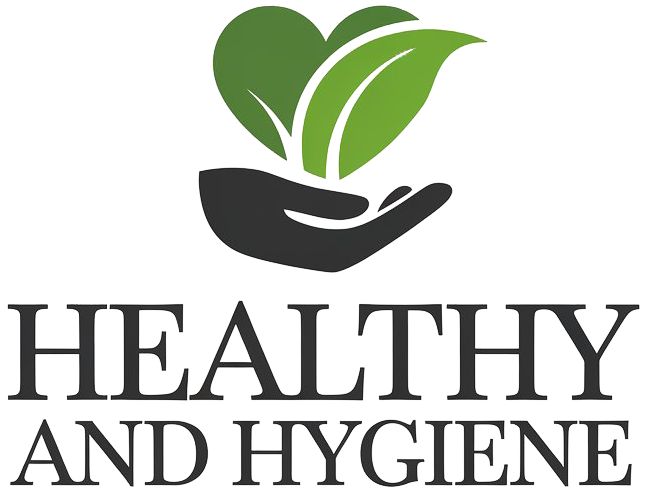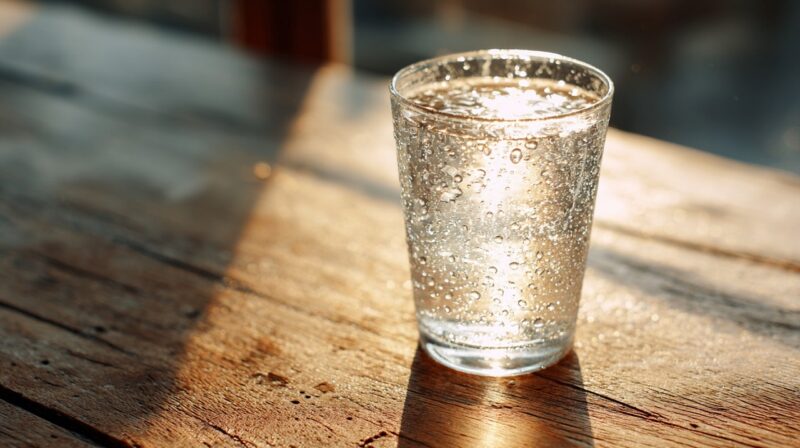Hydration sounds like a no-brainer: drink water, stay alive, right? Yet online advice often wraps up in blanket “one-size-fits-all” rules that miss the real point.
You aren’t a number, your environment isn’t static, and your day doesn’t unfold like everyone else’s.
We prepared a practical, science-backed route to figure out how much water you need, broken down into clear steps and everyday examples you can actually use.
Key Points
- Daily hydration needs vary: ~3.7 L for men, ~2.7 L for women, including food moisture.
- Activity, heat, altitude, illness, and diet all raise fluid needs.
- Tea, coffee, milk, juice, and water-rich foods count; alcohol dehydrates.
- Urine color and body weight changes are the best real-time hydration checks.
Why One-Size-Fits-All Advice Misses the Point
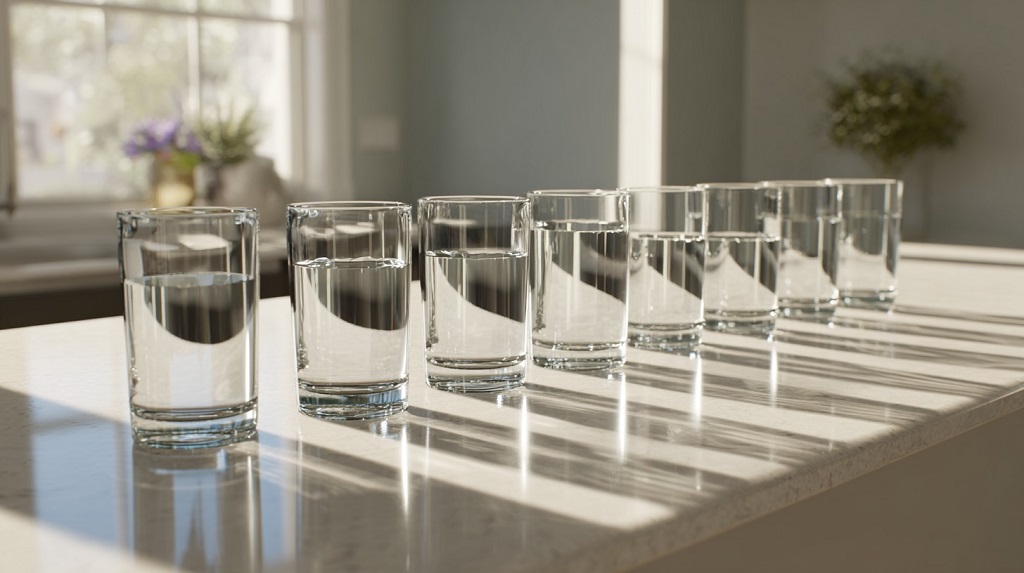
Ever heard “eight glasses a day”? It’s catchy and easy to repeat, but most experts say it’s not a genuine hydration target. Water needs vary wildly by body, lifestyle, climate, and diet.
The “8×8” idea likely grew out of old calorie-based guidelines mixed with the fact that food supplies a chunk of your daily water, rather than being a mandatory prescription.
Use it as a light touch reminder, not a rule carved in stone. Science supports much more individualized tracking.
Your Daily Water Baseline
Science gives us some starting points. According to the National Academies Press:
- Men: roughly 3.7 liters per day of total water (that’s beverages plus food moisture).
- Women: about 2.7 liters per day total.
European agencies suggest slightly lower figures, about 2.5 L for men and 2.0 L for women, also counting food moisture. Differences boil down to methods and diets, but both ranges serve as solid starting points.
In plain talk: if the U.S. number fits your day, you’ll likely sip around 9-13 cups of fluid and get the rest from food. If you align with Europe’s figure, maybe 7-10 cups, depending on meals.
What Counts Toward Hydration?

Hydration isn’t just plain water. You get hydration credit from:
- Water, obviously.
- Sparkling water, unsweetened soft drinks.
- Tea, coffee (in moderation).
- Milk, juice, soups.
- Foods rich in water like fruits, veggies, yogurt.
Most people can count tea and coffee toward daily intake; moderation is the key. Alcohol is a different animal: it suppresses vasopressin, the hormone your kidneys use to conserve water, meaning you’ll urinate more and risk feeling extra dry, especially in heat.
Baseline Plus Adjustments
Think of hydration like building a sandwich: baseline is the bun, adjustments are the fillings, topped off with real-life feedback (like urine color and weight changes).
1) Set a Base
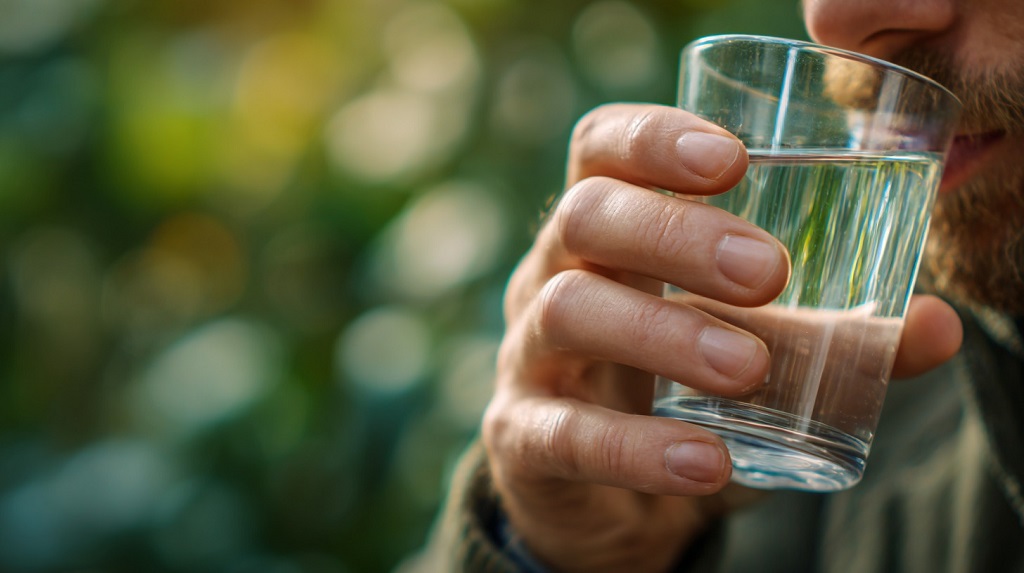
Choose your starting point:
- U.S. baseline: Men ~3.7 L, Women ~2.7 L total water.
- Europe range: Men ~2.5 L, Women ~2.0 L total water.
2) Factor in Activity and Heat
Hard work or workouts raise your needs fast. Tracking your personal sweat rate gives the best picture.
Quick Sweat-Rate Check
- Weigh yourself before a one-hour session (same clothes each time).
- Weigh again afterward, record any drinks during the session.
About every 0.45 kg (1 lb) lost typically equals 0.47 L (16 fl oz) of sweat. Afterward, replenish around 100% to 150% of that loss over the next 2-4 hours, along with electrolytes if it was a long or salty-sweat session.
For hot environments, like outdoor jobs, experts recommend sipping small amounts frequently, roughly a cup every 15-20 minutes, with planned rest/shade breaks.
Also, don’t overdo it. Drinking more than about 1.4 L in an hour can raise risks like water toxicity, so go steady.
3) Adjust for Climate, Altitude, Flights
- At altitude: cold, dry air and fast breathing costs extra water. Climb or travel high? Add fluids, especially during acclimatization or activity.
- Air travel: cabins hold just 10-20% humidity-eyes and airway dry out. Keep a bottle handy for regular sips.
- Heat exposure (outdoors/travel): dehydration links to heat illness risk. Stay hydrated, rest, seek shade-the hydration-rest-shade trio keeps you safer.
4) Account for Life Stage
- Pregnancy: needs rise to around 3.0 L total water.
- Breastfeeding: around 3.8 L total water.
- Kids & teens: daily beverage targets vary, roughly 4 cups for toddlers, 5 cups for younger kids, 7-8 cups for older kids/teens (food water is extra). Make water the go-to, save sports drinks for sweaty exertion.
- Older adults: thirst may not signal reliably. Schedule fluid breaks and monitor medications that boost urination.
5) Raise Intake When Illness or Dietary Shifts Come Into Play

- Fever, vomiting, diarrhea: fluid needs spike. Oral rehydration solutions (carefully mixed with water, salts, glucose) are ideal for serious losses.
- Low-carb or high-protein diets: they shift how your body holds water. Glycogen drop and nitrogen excretion can raise the need. Watch urine color and weight trends along with baseline metrics.
6) Know When You Must Cap Fluids
- Kidney disease or dialysis: fluid limits may be part of your care. Follow clinical guidance, not general benchmarks.
- Heart failure: Some people must limit fluids to around 1.5-2 L per day if symptoms or low sodium present. Stick with your provider’s plan.
Spotting Hydration Status in Daily Life
Some simple checks work in real time:
- Urine color: aim for pale straw or light yellow. Dark suggests it’s time to drink.
- Body weight: during hot or strenuous days, losing 1 percent of body weight signals you need to refuel fluids. Weighing before and after helps gauge that.
Less talked about than dehydration, overhydration can dilute your blood sodium, especially if you chug too much water during long efforts without balancing electrolytes. Most expert statements warn against “as much as possible” fluid strategies; individualized plans work much better.Watch for Overhydration Too
Quick Note on Coffee, Tea, Alcohol, and Carbonation
- Caffeine drinks: count toward hydration in moderation. High intake may spur more frequent urination in some people, so pace yourself.
- Carbonated water: absolutely fine hydration; opt for unsweetened if you care about calories or teeth health.
- Alcohol: increases urine production and dehydrates more in heat or travel. Alternate alcoholic drinks with water, and avoid alcohol before/during extended physical effort.
How Much Water Comes from Food?
Typically, food provides about 20 percent of your daily water – think soups, fruits, veggies, yogurt, stews. Including water-rich meals makes fluid targets much easier without overthinking it.
Real Human Variability Is the Norm
Worldwide studies using isotope tracking show water turnover ranges widely – people in hot, humid, or highly active environments process much more water than those in cool or sedentary places. Tailoring hydration is physiology in motion.
Putting it Аll Тogether
Step 1. Pick Your Base Target
| Group | Daily total water target | Notes |
| Adult men | ~3.7 L | Includes food water. |
| Adult women | ~2.7 L | Includes food water. |
| EU reference men | ~2.5 L | EU baseline figure. |
| EU reference women | ~2.0 L | EU baseline figure. |
| Pregnancy | ~3.0 L | Total water. |
| Breastfeeding | ~3.8 L | Total water. |
| Children 1-3 years | ~4 cups beverages | Food water extra. |
| Children 4-8 years | ~5 cups beverages | Food water extra. |
| Older children/teens | ~7-8 cups beverages | Add more during sports or heat. |
Step 2. Adjust for What Your Day Looks Like
- If you exercise or work hard: weigh yourself before and after; sip steadily and replace 100-150 percent over 2-4 hours, plus salt if needed.
- On hot or humid days: drink more often, schedule sipping.
- At altitude or in airplane cabins: add water, small sips regularly.
- During pregnancy or nursing: add fluids accordingly.
- If illness or intense stress hits: go with rehydration solutions or extra fluids.
- Diet shifts (low carb, protein-heavy): keep tabs on urine color, body weight, and ease into hydration adjustments.
Step 3. Use Daily Signals
Build in simple reality checks:
- Urine color: pale straw equals good, dark equals drink up.
- Body weight drops during hard or hot days? Replenish fluid accordingly.
Step 4. Stay Sensible
- Avoid chugging huge volumes; don’t cross 1.4 L per hour habitually.
- Balance fluids with electrolytes when sweating heavily or fighting illness.
- Coffee, tea, sparkling water all help; alcohol does not.
Real-Life Example
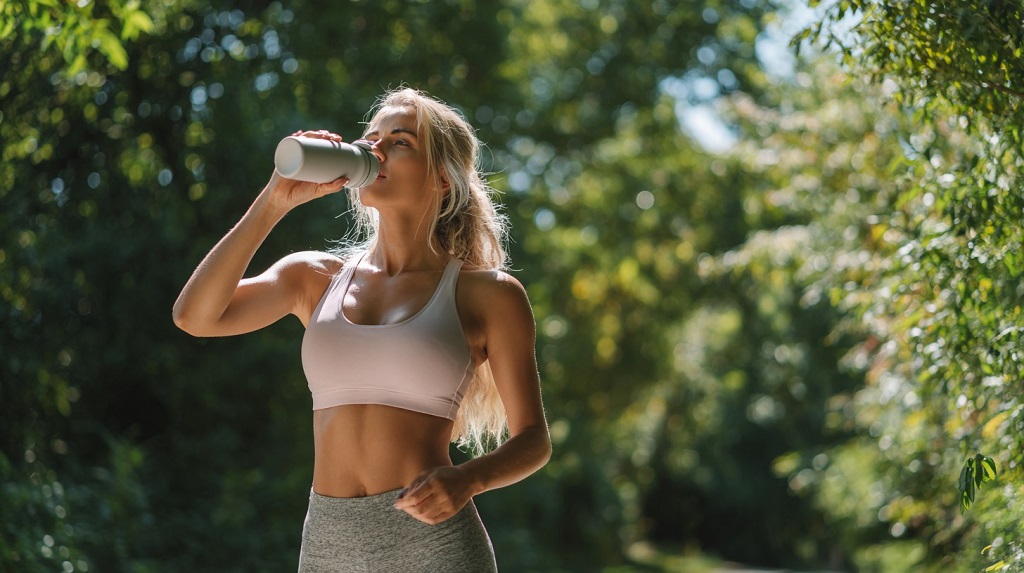
Let’s say you’re a woman burning 2,000 kcal on a warm day with a moderate jog, and you eat a mix of dry and water-rich meals.
You’d start with a 2.7 L baseline, add perhaps 0.5 L for the jog (based on your sweat test), and maybe another 0.3 L for the dry surroundings at home and low-humidity air.
You’d sip all day rather than pound it at once, observe urine color, and land in a happy hydration zone, without turning your day into a chore.
FAQs
Final Words
Start with realistic totals: around 3.7 L for men, 2.7 L for women, counting all fluids, including water in food. Adjust sensibly for activity, heat, altitude, travel, life stage, illness, and diet shifts.
Plain water is your base: coffee, tea, soups contribute; alcohol doesn’t help. Keep tabs on urine color and body weight trends. If illness or conditions like kidney or heart disease are in the mix, follow your healthcare provider’s fluid advice.
Easy to say, harder to make sticky, but building your hydration plan around real signs and personal needs (rather than catchy slogans) makes it more doable.
Little sips sprinkled through your day, served with self-awareness, and backed by solid physiology? Now that rings human.
